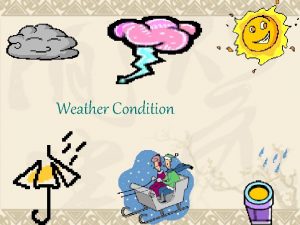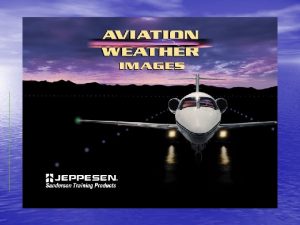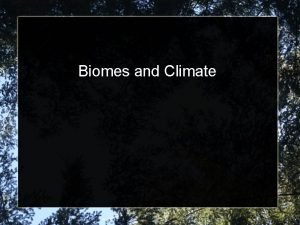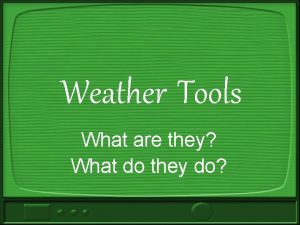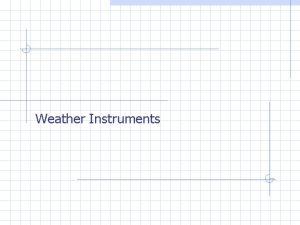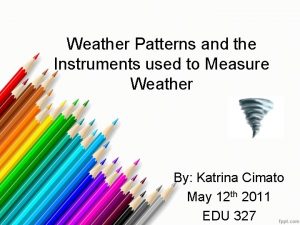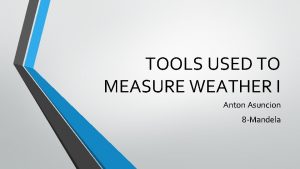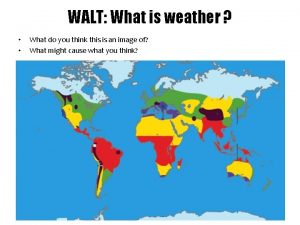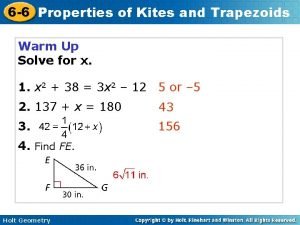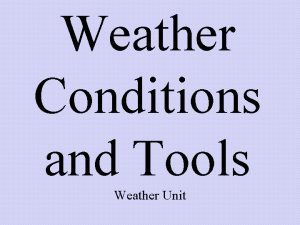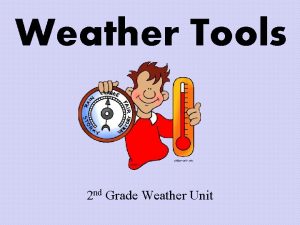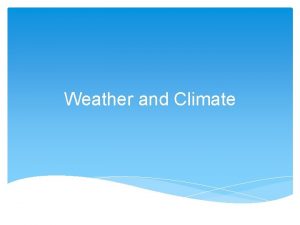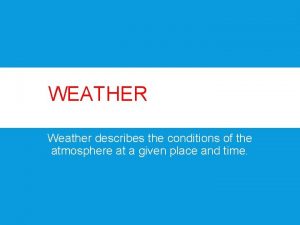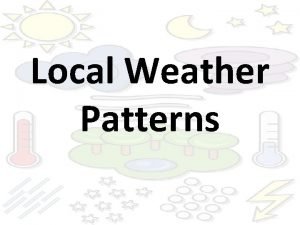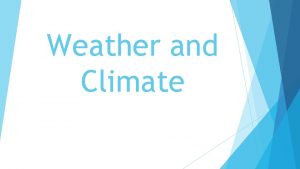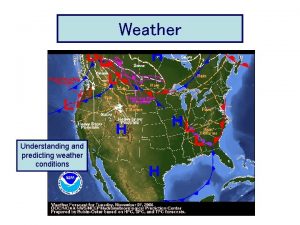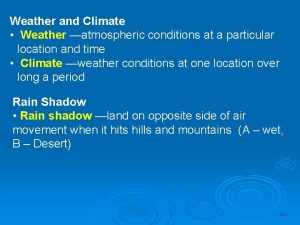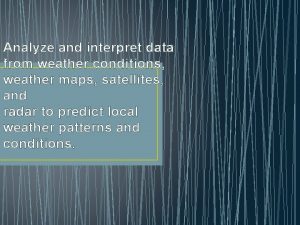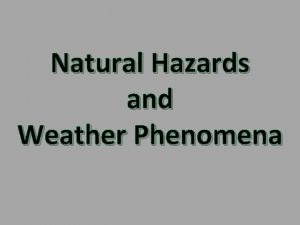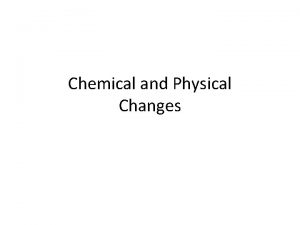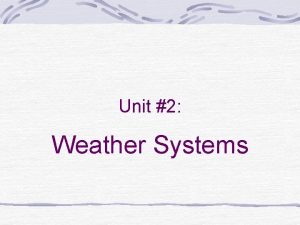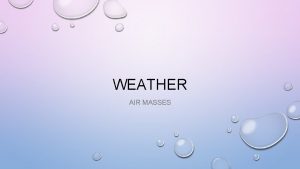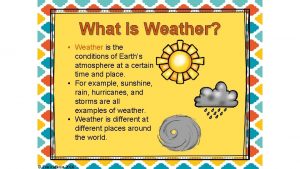Weather Conditions and Tools Weather Unit Weather changes






























- Slides: 30

Weather Conditions and Tools Weather Unit

Weather changes occur day to day and from season to season.

In order to understand daily weather conditions, weather data must be collected accurately using weather instruments.

Wind Speed The condition of how fast the air is moving

Wind Speed Measured with an anemometer as the wind causes the cups to spin

Anemometer Wind speed is measured with an anemometer as the wind causes cups to spin

Anemometer How does it work? As the cups spin, the anemometer counts how many times they spin in a given period of time. The more turns, the faster the wind speed

Wind Direction The condition determined by where the wind/moving air is coming from

Wind vane Wind direction is determined with a wind vane (weather vane). Wind direction is described by the direction from which the wind is blowing.

Wind vane How does it work?

Describing Wind Direction

Precipitation The condition of the type of water falling to Earth from the clouds

Rain gauge Amount of precipitation is measured in a rain gauge. Markings on the side show much rain has fallen.

Rain gauge How does it work? Rain falls and collects in the rain gauge. Markings on the side show the amount of rain that has fallen. Measures rainfall in inches.

Temperature The condition of how warm or cold the air is at a given time

Thermometer Air temperature is read using a thermometer. The scale may be read in degrees Fahrenheit or Celsius. Air temperature should be measured out of direct sunlight.

Thermometer How does it work?

Seasons of the year change!

As the seasons of the year change, temperature changes may cause precipitation changes.

Northerly winds may bring colder air than southerly or westerly winds. What does that mean? Winds blowing from the north may be colder than winds blowing from the south or west.

Weather Conditions • fair weather • showers or light rain • clear skies with cold temperatures • days of clouds • days of precipitation • windy fair days • windy stormy weather

Weather patterns involve weather conditions that are repeated due to the season of the year. Example: Summer temperatures are generally warmer than winter temperatures.

Weather Signs • looking at clouds • noticing changes in wind speed and noticing changes in wind directions [These can indicate storms or temperature changes. ]

Weather Predictions Based on qualitative and quantitative data-NOT JUST GUESSES! The predictions are based upon a combination of types of data.

Meteorologists interpret information from a variety of sources and use those sources to make predictions. http: //www. wistv. com/

Meteorologists The information they use is shown on a weather map.

Weather Maps May show large masses of warm or cold air moving…Lines between the air masses are called fronts.

Weather Maps May show large masses of warm or cold air moving…Lines between the air masses are called fronts. Warm fronts Cold fronts When a warm front passes over an area, the air temperature increases. When a cold front passes over an area, the air temperature decreases.

Data related to temperature and precipitation can also be found on a weather map.

Weather Conditions and Tools Weather Unit
 Changes in latitudes, changes in attitudes meaning
Changes in latitudes, changes in attitudes meaning Physical changes examples
Physical changes examples Name weather conditions
Name weather conditions Label the map with the weather conditions brainpop
Label the map with the weather conditions brainpop Imc conditions definition
Imc conditions definition Google classroom
Google classroom The average weather conditions of a place
The average weather conditions of a place What receives the most solar radiation
What receives the most solar radiation Unit 6 review questions
Unit 6 review questions Weather tools and what they do
Weather tools and what they do Marking tools in sewing
Marking tools in sewing Unit 5 tools and equipment
Unit 5 tools and equipment Weather measurement tools
Weather measurement tools Instruments used to measure weather and climate
Instruments used to measure weather and climate Tools to measure weather
Tools to measure weather Tools to measure weather
Tools to measure weather What is weather
What is weather Properties of kites and trapezoids
Properties of kites and trapezoids Compare and contrast chemical and physical changes
Compare and contrast chemical and physical changes Marriages and families 8th edition
Marriages and families 8th edition Marriages and families changes choices and constraints
Marriages and families changes choices and constraints Station model weather symbols
Station model weather symbols Tongue twister whether the weather
Tongue twister whether the weather Poem on seasons
Poem on seasons Cold cool
Cold cool Weather vs whether
Weather vs whether Heavy weather by weather report
Heavy weather by weather report Capital weather gang weather wall
Capital weather gang weather wall Right triangle trigonometry
Right triangle trigonometry Unit process and unit operation
Unit process and unit operation Difference between unit process and unit operation
Difference between unit process and unit operation


